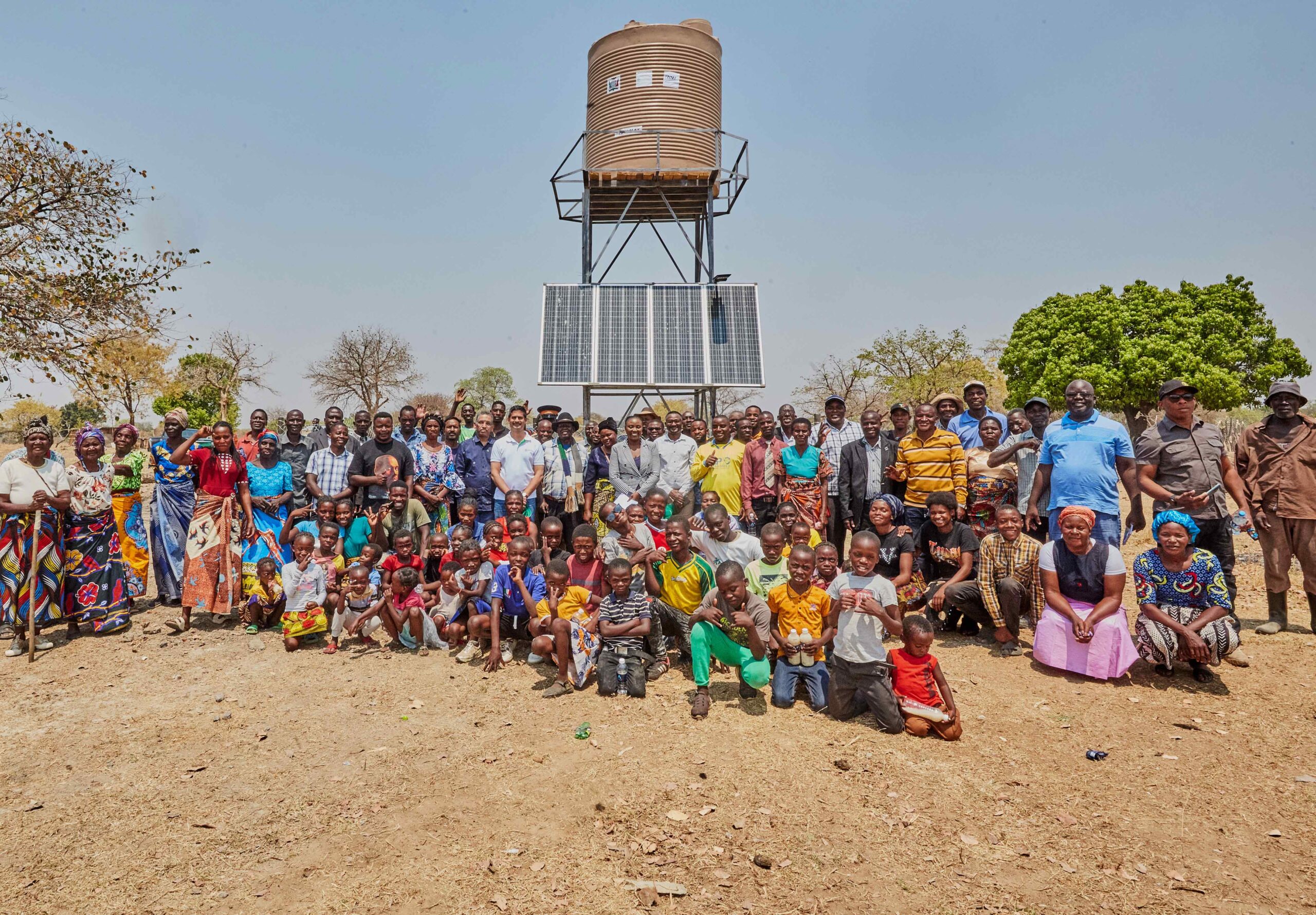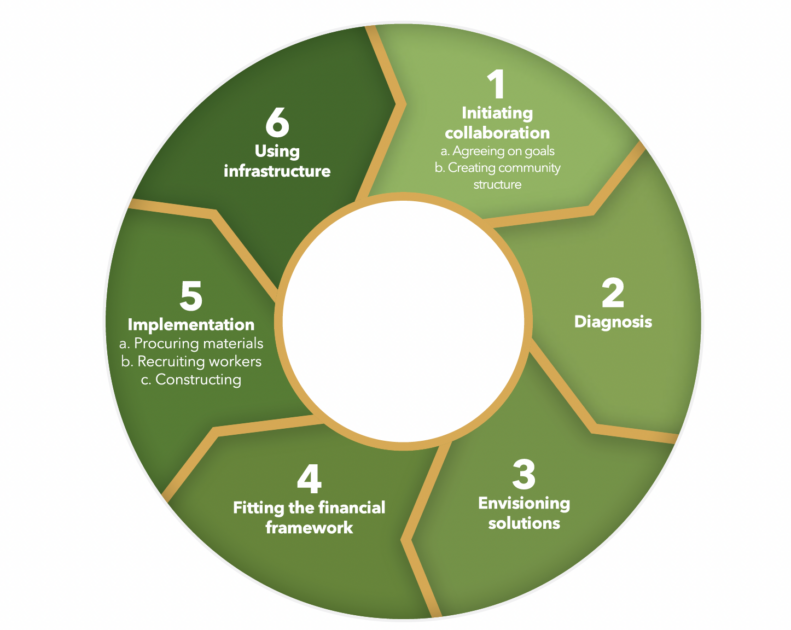
by Giriraj Amarnath, International Water Management Institute, and Martina Mascarenhas, ClimBeR
Inequality is a powerful determinant of who bears the brunt of a disaster. The poor and marginalized who often live in more hazard-prone areas, with poor infrastructure, and lack access to health care and other services are only further at risk from disasters. In this lens, poverty is both the cause and effect of disaster risk. The lack of income, coping measures, and access only further exacerbates these inequalities over the long term. Disaster risk reduction, therefore, requires engagement across all and multiple levels of society, and multistakeholder partnerships. It also needs to integrate social equity and inclusion into intervention measures to ensure that those who are disproportionately affected by disasters are not left behind.
The International Day for Disaster Risk Reduction: looking back before looking ahead
In 1989, the United Nations General Assembly designated October 13 as the International Day for Disaster Risk Reduction (IDDRR) to shine a spotlight on how disasters affect lives and livelihoods the world over and highlight the need for disaster risk reduction as a means of ensuring sustainable development. This day is an opportunity to acknowledge the progress made in preventing and reducing disasters and highlight the amount of work that is yet to be done to ensure that the world’s poorest and most vulnerable are better prepared to cope with disaster risk fueled by climate change. Earlier this year, in May, the UN General Assembly made a commitment to accelerate action to strengthen disaster resilience during the Midterm Review of the Sendai Framework for Disaster Risk Reduction (2015-2030) – the first major agreement of the post-2015 development agenda which provides Member States with concrete actions to spur sustainable development and protection from the dire consequences of disaster risk. Member States, therefore, must prioritize their commitment to achieving the Sendai Framework and the Sustainable Development Goals (SDGs), especially poverty reduction, inequality, and a lack of access.
Locally led climate action for a more resilient future
 Locally led climate action has emerged as a critical approach to address the challenges brought on by climate change and the subsequent disasters that it leaves in its wake, especially at the community level. Ensuring inclusive participation, especially at the grassroots level, and giving local communities the tools, finance, capacity strengthening, and opportunities that they need to take ownership of adaptation strategies and solutions is a critical element of building longer-term and sustainable resilience. It is impossible to comprehend the full extent of the dynamics which affect people’s ability to cope with shocks, without the inclusion of community voices. We cannot define critical needs, the assets, and the systems that vulnerable communities depend on without engaging and including community voices in such conversations, and while the inclusion of communities is essential to spur locally led action, it does not come without its own set of challenges.
Locally led climate action has emerged as a critical approach to address the challenges brought on by climate change and the subsequent disasters that it leaves in its wake, especially at the community level. Ensuring inclusive participation, especially at the grassroots level, and giving local communities the tools, finance, capacity strengthening, and opportunities that they need to take ownership of adaptation strategies and solutions is a critical element of building longer-term and sustainable resilience. It is impossible to comprehend the full extent of the dynamics which affect people’s ability to cope with shocks, without the inclusion of community voices. We cannot define critical needs, the assets, and the systems that vulnerable communities depend on without engaging and including community voices in such conversations, and while the inclusion of communities is essential to spur locally led action, it does not come without its own set of challenges.
Research interventions, therefore, need to focus on transformative measures that include social equity and inclusion, (Jon Hellin et al 2022, Environ) together with improved coordination across multiple levels, investments in data collection, access to climate information services, and anticipatory action to ensure the longer-term resilience of local communities to the continued effects of climate change and the reduction of disaster risk. This requires that countries – all levels of government, and multiple institutions, come together to engage, strengthen capacity, and empower all groups, including those local communities who are the most at risk from disasters, such as women, older people, persons with disabilities, indigenous communities, and minorities are meaningfully included in such decision-making processes to ensure equal participation.
The CGIAR Research Initiative on Climate Resilience (ClimBeR) aims to do just this. ClimBeR works with a diverse range of partners to transform the climate adaptation capacity of food and agricultural systems in low- and middle-income countries, reduce vulnerability to climate change at its roots, and support countries to adapt and build equitable and sustainable futures. The Initiative also aims to empower women, youth, and underrepresented groups through multilevel polycentric governance – one of four workstreams that sit under its Governance for Resilience (G4R) research area.
The Governance for Resilience (G4R) workstreams utilize relevant frameworks to improve horizontal and vertical coordination, enable responsiveness to climate shocks, facilitate long-term planning for adaptation, and nurture champions of change across local communities to achieve transformative impact. As a result, smallholder communities will have greater agency through stronger representation in decision-making spaces on climate adaptation solutions, through the representation of local leadership in planning and implementation which helps build stronger and more resilient communities with effective, efficient, just, and sustainable solutions.

Multilevel polycentric governance – quite a mouthful, so what does it mean in practice?
Polycentricity is a fundamental concept that appears in the work of Elinor Ostrom – the first woman to win the Nobel Prize in the Economic Sciences. It refers to a complex form of governance with multiple centers of decision-making, each of which operates with a certain degree of autonomy (E. Ostrom, 2005; V. Ostrom, Tiebout, & Warren, 1961). In very simple terms, multilevel polycentric governance means that you need multiple inputs from multiple governing bodies, who come together collectively through collective action while retaining their autonomy to develop relevant and appropriate solutions that meet community needs. This approach to governance and the implementation of solutions is now even more urgent than ever as we see the ever-increasing rise of climate hazards and disasters and is one of the fundamental ways in which ClimBeR’s G4R research area and partners work to implement locally led climate action through multiple levels of intervention and collaboration, across multiple stakeholder groups.
ACTION for Resilience – Zambia: a case study
Earlier this year, ClimBeR launched the Zambia Drought Management System (ZADMS). ZADMS is an effective tool that can provide critical information to help national agencies effectively manage drought. Zambia’s Ministry of Agriculture can, for instance, use the system in several ways; from advising farmers to delay planting during periods of forecasted drought at the start of the rainy season, or to choose crop varieties that are better suited for a season that will feature below-average rainfall. By using the ZADMS, the Ministry was able to identify areas of recurring drought for contingency plans. A prioritization of local communities was then conducted through a consultative process, and the Hanzila community of the Monze district in Southern Zambia was identified for intervention.
ClimBeR’s LocAlly led Climate adapTation ChampION (ACTION) Grant Program focuses on interventions that are driven and implemented at the local level, with the involvement and leadership of community members, organizations, and local governments. These interventions are tailored to the specific needs, priorities, and context of the community and aim to build resilience against the impacts of climate change. The ACTION Grant Program identifies rewarding, inspiring, and sustainable local innovations that can be scaled through knowledge sharing among communities and within polycentric governance structures of governments and other support agencies for transformative adaptation to climate extremes.
ClimBeR developed a polycentric governance framework which was analyzed and evaluated in conjunction with local communities. Co-creating the solution was a participatory process that involved putting this framework into practice by involving multiple stakeholders, from the local government to community organizations, who were then selected to set up the borehole.
Through the ACTION program, ClimBeR is catalyzing community-led climate adaptation in Monze’s Hanzila community, through the community-led solar-powered borehole activity in collaboration with local authorities.

Speaking at the launch event, Chief Monze of the Monze District noted that this was the first time ever that such a gesture had taken place. He called the people of the community and the headman lucky, and asked that no one destroy the borehole out of jealousy.
This is an example of what multilevel polycentric governance looks like, as both implementation and sustainability of such interventions cannot take place without the equal participation of both local authorities and the local communities as well as the active involvement of national-level stakeholders and the private sector.

“This borehole has brought a lot of benefits into our lives. We will have access to clean water, water for gardening, as well as water for our livestock,” Brian Mulize, farmer, Monze District.
The solar-powered borehole was successfully handed over to the local community at the launch event which took place on September 23 in Monze. This intervention will not only help this community better cope with climate extremes such as drought but also provide them with multiple benefits over 900 households with access to clean water for multiple uses, including drinking water not only for the people of the community but also their livestock, approximately 6,000 of them. Most of all, it will serve a key function of irrigating high-value crops such as tomatoes, cabbage, and eggplant, which will give them both economic and nutritional benefits. It is also an example of improving equity as the presence of the borehole means that women from the community do not have to travel long distances to collect water, or manually pump water for hours, which is physically exhaustive. The borehole will not only give them access to water but also help ensure that their time is more efficiently used.
The Ministry of Agriculture, local government, World Vision (as a development partner), ClimBeR, and the local community who are responsible for its maintenance are all pieces of this polycentric governance framework which encourages collaboration by breaking silos. At the launch event, local government officers highlighted that this intervention by ACTION will also enable the community to experience and benefit from climate-smart practices, such as the distribution of quality seeds, enabling access to finance, which brings broader implications such as resilient development through greater economic power to cope with climate hazards and disasters, through the transformation of the community’s land, water, and food systems.
ClimBeR works to ensure smallholder resilience through the transformation of land, water, and food systems. While communities and national and local governments have an important role to play in building and sustaining climate resilience, investment in climate action is equally critical. Multilateral development banks must also be a part of this process and provide access to finance and financial services. Mechanisms must be put in place so that local actions and interventions receive substantial investment. Everyone needs to be involved and a part of the process so that no one is left behind.
Related resources:
Click here to access the ZADMS
Read the Innovation Brief on Locally led climate action for sustainable community resilience.
Featured image:
A solar-powered borehole in the Hanzila community of the Monze District in Southern Zambia aims to help local communities mitigate disaster risk and help change lives. Photo credit:ClimBeR



